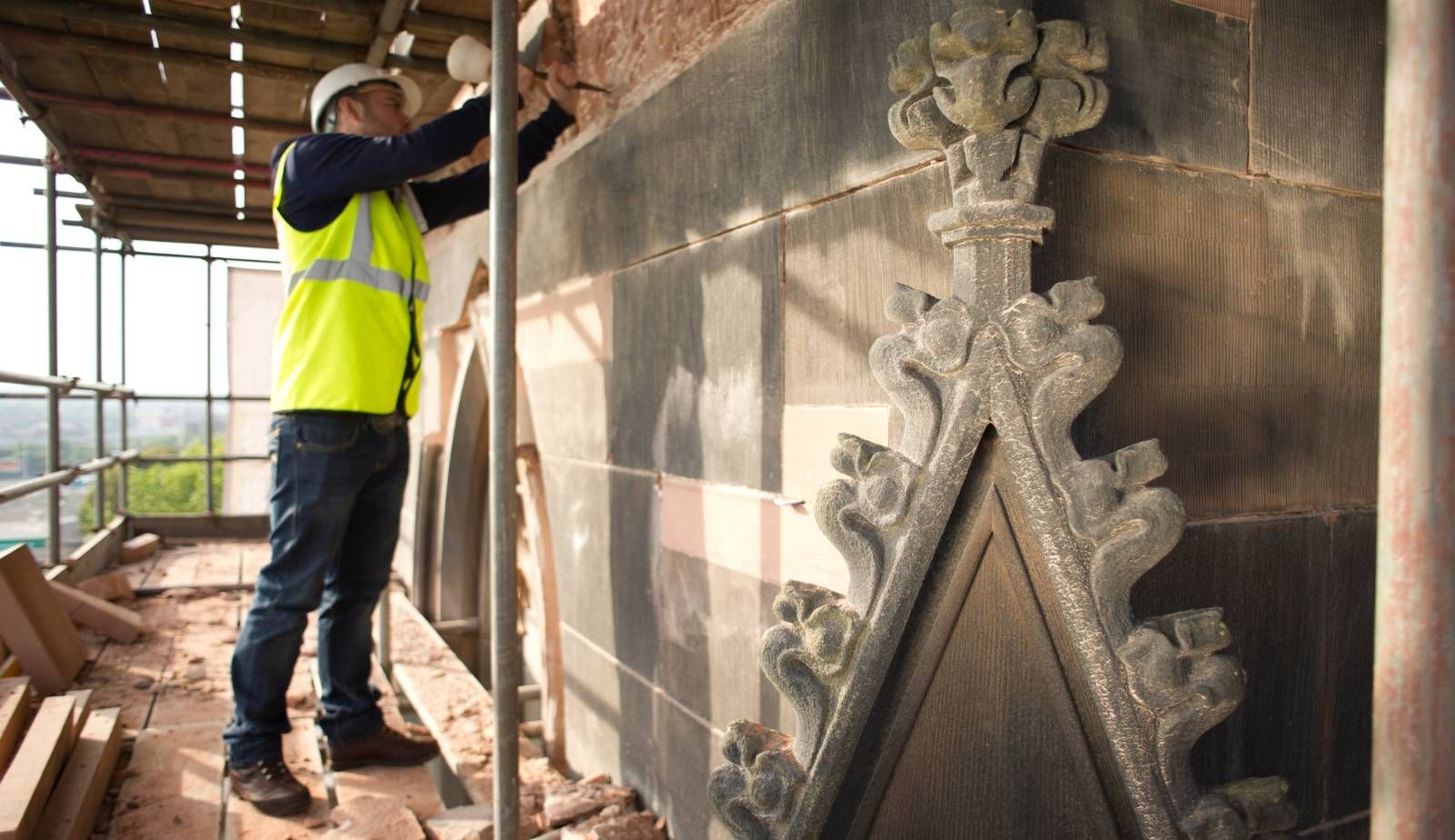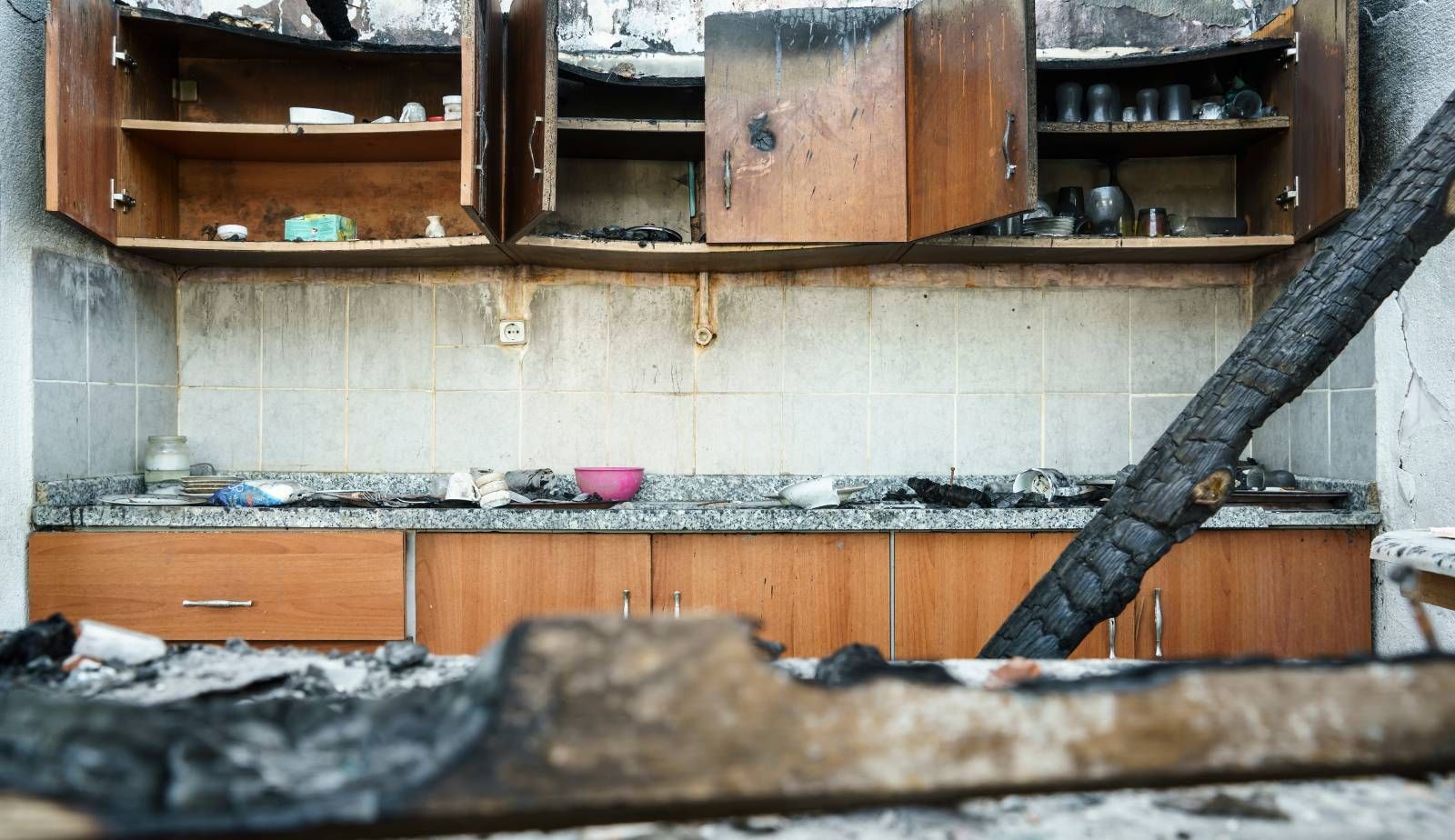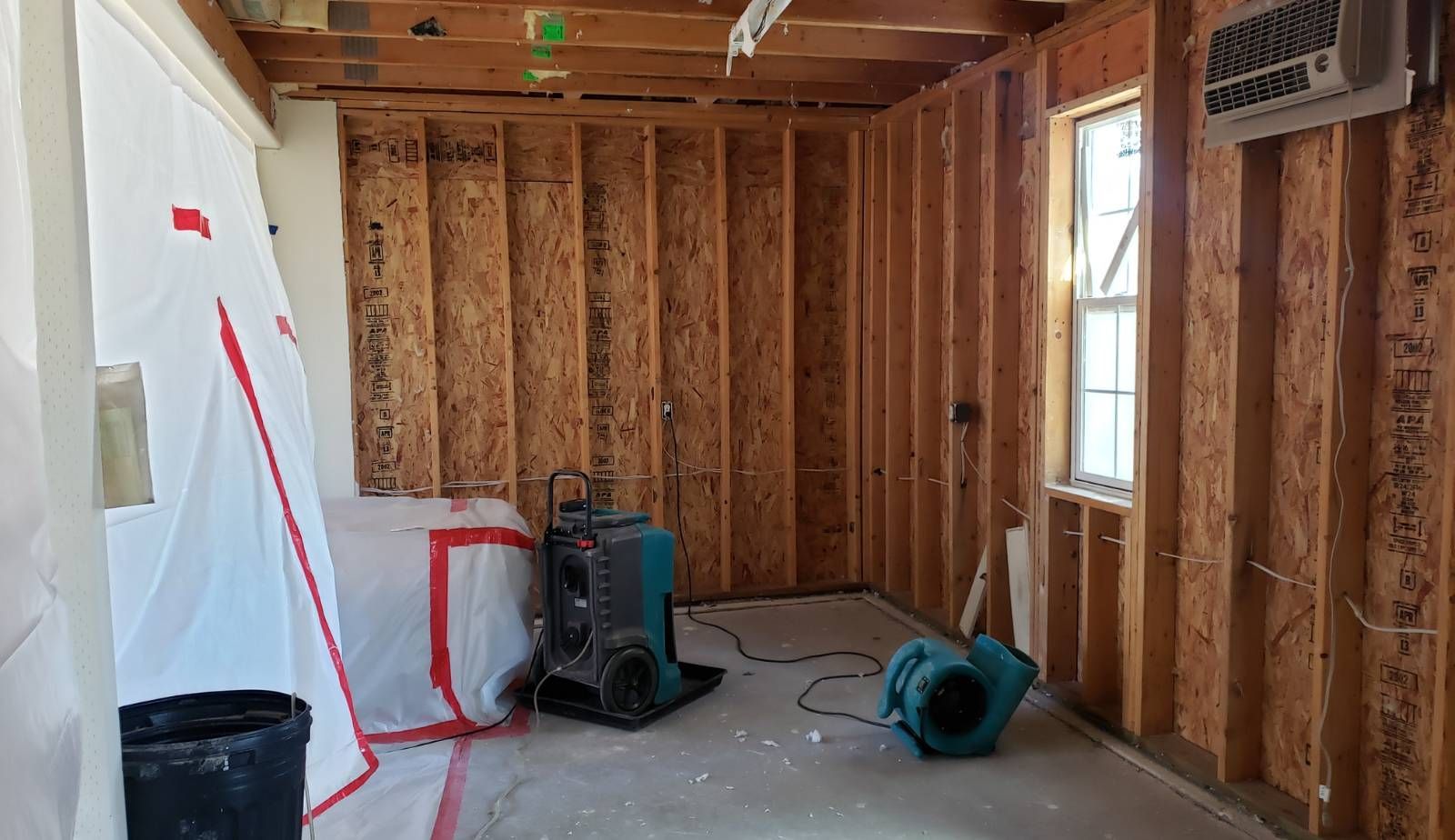Fire Damage in Louisiana Homes: Addressing Humidity, Storm-Related Risks, and Restoration Challenges with Drymax
Fire damage presents unique challenges for homeowners in Louisiana, particularly due to the region's high humidity levels, which can exacerbate the effects of smoke and water during restoration. Storm-related instances often lead to fires igniting in homes already vulnerable from wind and water damage, complicating the recovery process. Understanding these factors is essential for effective fire restoration strategies.
The presence of older building materials in many Louisiana homes poses another challenge. Components such as untreated wood and outdated insulation can react differently to both fire and moisture, potentially leading to hidden damage that traditional restoration techniques might overlook. DryMax employs specialized methods tailored to address the specific characteristics of these older structures, enhancing the efficiency of remediation efforts.
A comprehensive approach is crucial when handling the aftermath of fire damage in this region. By combining extensive knowledge of local conditions with advanced restoration practices, DryMax is positioned to provide effective solutions that not only restore homes but also ensure long-term safety and resilience against future incidents.
Fire Damage in Louisiana Homes: The Unique Context
Louisiana homes face distinct challenges when it comes to fire damage restoration due to specific climatic factors, the prevalence of older building materials, and unique environmental conditions. Each of these elements affects how effectively restoration efforts can be implemented.
Climatic Factors Affecting Fire Restoration
Louisiana's humid climate plays a significant role in fire damage scenarios. High humidity levels can slow down the drying process of materials post-fire, leading to potential mold growth. This poses additional risks to homeowners and compels restoration experts to employ more aggressive drying techniques and equipment.
The region is also prone to severe storms, often igniting fires from lightning strikes or wind-related accidents. These storm-related fires can differ dramatically from typical residential fires, frequently resulting in extensive damage that requires specialized knowledge for effective restoration.
Prevalence of Older Building Materials
Many homes in Louisiana feature older construction materials that can complicate fire restoration. Common materials such as wooden frames and outdated insulation may negatively impact the fire’s spread and the effectiveness of restoration efforts.
Older homes may also contain hazardous substances like asbestos, which requires careful handling during restoration. Restoration professionals must navigate these issues skillfully while ensuring the safety of residents and adhering to local regulations.
Louisiana's Distinctive Environmental Challenges
Louisiana’s unique environment presents specific challenges in fire restoration. Flooding is common, especially after a fire incident, which can exacerbate damage. Moisture from floodwaters can penetrate fire-damaged areas, creating favorable conditions for mold growth.
Additionally, local wildlife can also impact restoration efforts. Insects and rodents may find their way into fire-damaged structures, leading to further complications. Addressing these environmental factors is crucial for ensuring that fire damages do not lead to ongoing issues in the future.
Humidity’s Role in Fire Damage Restoration
Humidity complicates fire damage restoration in Louisiana homes by creating a conducive environment for mold growth and contributing to structural vulnerabilities. After a fire, addressing moisture content is crucial to preventing ongoing damage and health risks.
Moisture and Mold Growth After Fire
High humidity levels encourage rapid mold growth in the aftermath of a fire. When water used in firefighting combines with the existing moisture in the air, it creates a perfect breeding ground for mold spores. Mold can begin to develop within 24 to 48 hours after water exposure.
To effectively counter this, restoration efforts must include thorough drying procedures and the use of dehumidifiers. Regular inspections for mold growth are essential to prevent widespread contamination, particularly in concealed areas like behind walls or inside attics.
Water Intrusion and Structural Risks
Water intrusion poses significant structural risks in fire-damaged homes. Humidity combined with water damage can weaken building materials like wood and drywall. These materials absorb moisture, leading to deformation and deterioration.
Additionally, wet insulation and compromised roofing can allow further moisture entry, facilitating ongoing damage. Restoration teams must evaluate the structural integrity of affected areas, employing strategies such as replacing severely damaged materials and utilizing specialized drying equipment to mitigate risks.
Health Hazards from Humid Post-Fire Environments
Post-fire environments with high humidity levels present serious health hazards. Excessive moisture fosters mold spores, which can lead to respiratory issues and allergic reactions among occupants. Vulnerable individuals, including children or those with pre-existing conditions, are particularly at risk.
To ensure safety, restoration professionals must implement rigorous mold remediation processes. This includes removing contaminated materials and maintaining adequate indoor air quality through ventilation. Monitoring humidity and maintaining appropriate levels is critical in safeguarding residents' health during and after the restoration process.

Storm-Related Fires and Their Complications
Storm-related fires present unique challenges, particularly in Louisiana's humid climate. Heavy rain and flooding can exacerbate fire damage, complicating restoration processes significantly. The interplay of water and fire damage requires specialized approaches to mitigate the impact effectively.
Heavy Rain and Water Damage
Heavy rain can create conditions that increase the risk of fire outbreaks. Water can infiltrate buildings, leading to serious structural issues. When plumbing fails due to storm conditions, the resulting water accumulation can cause damage to electrical systems.
Firefighters may face difficulties when battling blazes fueled by fire and wet conditions. These storms can lead to increased humidity, allowing mold to flourish in damp areas, further complicating repairs. Addressing both fire and water damage simultaneously requires expertise to prevent long-term issues.
Flooding and Water Removal Challenges
Flooding poses significant hurdles for effective water removal and damage cleanup. In Louisiana, flooding can lead to extensive water damage, especially in homes with older building materials. These materials may not withstand prolonged exposure to water.
Restoration teams must employ flood barriers to protect homes during storms actively. Once the flooding occurs, fast and efficient water removal becomes essential. Advanced equipment, including pumps and dehumidifiers, is necessary to ensure thorough water extraction and to minimize mold growth.
Impact of Older Building Materials on Restoration Strategies
Restoration strategies for homes affected by fire damage must address the unique challenges posed by older building materials. These materials often have distinct characteristics that influence both the restoration process and potential risks associated with outdated systems.
Material-Specific Restoration Techniques
Older homes often utilize materials such as plaster, solid wood, or older-grade insulation. These materials require specialized techniques during restoration. For example, plaster walls may need to be carefully repaired rather than replaced due to their vintage character.
Wood framing in older homes often experiences damage from fire and subsequent water used in suppression. Firefighters must be cautious to avoid further weakening the structure, which could compromise safety. Professionals often employ techniques like sectioning off damaged areas and using modern materials that blend seamlessly with older aesthetics.
Risks of Leaks and Plumbing Issues
Older plumbing systems are prone to numerous issues, particularly in homes built before updated codes were established. One significant concern is the presence of galvanized pipes, which can corrode and lead to significant leaks.
In addition, aging fixtures may not withstand the stress of water damage from fire suppression efforts. Restoration teams must assess plumbing for potential leaks that could exacerbate water damage, risking mold growth and structural integrity. Comprehensive inspections are vital to mitigate these risks and inform restoration planning.
Basement and Crawl Space Vulnerabilities
Basements and crawl spaces in older homes often present unique challenges during restoration efforts. Moisture tends to accumulate in these areas, significantly increasing the risk of mold and structural damage.
Older foundations may not have proper drainage systems, leading to water intrusion. This situation can be exacerbated by fire-related water damage if not addressed promptly. Effective restoration involves waterproofing these areas and ensuring adequate ventilation to reduce humidity. Inspecting and repairing any existing damage before beginning fire restoration can prevent future complications.

Health Risks Following Fire and Water Damage
The aftermath of fire and water damage presents significant health risks for occupants. Key concerns include the presence of mold and mycotoxins, as well as harmful microorganisms and bacteria that thrive in such environments. These factors can lead to various respiratory issues and allergic reactions, impacting indoor air quality and overall health.
Mold and Mycotoxins in Indoor Air
Mold growth is a common consequence of water damage, particularly in humid climates like Louisiana. Mold spores can become airborne, degrading indoor air quality.
Exposure to these spores may trigger allergic reactions in sensitive individuals. Additionally, certain molds produce mycotoxins, which are toxic substances that can pose severe health risks.
Symptoms associated with mycotoxin exposure include headaches, fatigue, and respiratory distress. In severe cases, long-term exposure may contribute to chronic health conditions, highlighting the need for prompt mold remediation following a fire or water incident.
Microorganisms, Bacteria, and Public Health
Fires often leave behind moisture, creating an ideal breeding ground for various microorganisms and bacteria.
These pathogens can include bacteria like Salmonella and E. coli, which can lead to gastrointestinal issues if contaminated surfaces or materials are not properly restored.
The presence of these microorganisms poses a threat to public health, particularly for vulnerable populations, including children and the elderly. Effective restoration strategies must prioritize thorough cleaning and disinfection to mitigate these health risks.
Ensuring that affected areas are free from these harmful agents is critical for maintaining a safe living environment.
Allergic Reactions and Respiratory Issues
Fire damage can aggravate existing respiratory conditions such as asthma. Residual smoke, soot, and mold spores can trigger asthma attacks and worsen other respiratory issues.
Individuals might experience a range of symptoms, including coughing, wheezing, and shortness of breath. Furthermore, those with allergies may be especially susceptible to reactions that cause sneezing, nasal congestion, or skin irritations.
Maintaining good indoor environmental quality post-damage is vital. Professional restoration services can significantly alleviate these risks by improving indoor air quality and ensuring a safer home environment for all occupants.
Drymax’s Solutions for Louisiana Homeowners
In the face of the unique challenges posed by humidity, storm-related fires, and older building materials, Drymax provides specialized solutions tailored for Louisiana homeowners. Their advanced techniques focus on effective moisture management, containment, and thorough remediation.
Advanced Moisture Removal and Cleaning Solutions
Drymax utilizes cutting-edge technology for moisture removal and cleaning. Their process begins with a thorough assessment, identifying affected areas and determining moisture levels.
Techniques such as in-depth drying methods are employed, including:
- Dehumidification: Using high-capacity dehumidifiers that extract moisture from the air.
- Thermal Imaging: This identifies hidden moisture pockets behind walls or in ceilings.
These methods ensure a comprehensive drying process, minimizing the risk of future mold growth. Their specialized cleaning solutions target smoke damage and odors caused by fire, providing a complete restoration.
Containment and Mold Remediation Approaches
To prevent further contamination, Drymax implements strict containment measures. They establish barriers to isolate affected areas, limiting the spread of harmful particles.
Key steps in their mold remediation strategy include:
- Air Filtration Systems: These systems remove airborne contaminants, enhancing air quality during remediation.
- HEPA Vacuuming: This ensures that any residual mold spores are effectively captured.
Drymax's trained technicians follow strict protocols to address mold issues thoroughly and prevent recurring problems for homeowners.
Professional Remediation and Long-Term Prevention
Professional remediation services from Drymax focus on not just restoring properties but also preventing future damage. Their team is trained in the latest techniques, ensuring swift and effective responses to fire and water damage.
Services include:
- Comprehensive Inspections: Regular evaluations help in identifying vulnerabilities.
- Material Upgrades: Recommendations for modern materials that resist moisture can be provided.
With these professional approaches, Drymax equips Louisiana homeowners with the tools necessary for lasting protection against the challenges posed by their environment.
Resilient Restoration Strategies and Community Resources
Effective restoration in Louisiana involves understanding the unique challenges posed by humidity, storm-related fires, and the specific building materials used in older homes. Implementing targeted strategies can mitigate damage and improve recovery efforts.
Drainage Improvements and Flood Protection
Proper drainage is essential for reducing the impact of flooding on homes. Inefficient drainage systems can exacerbate water damage following a fire. In Louisiana, residents can benefit from flood barriers and enhanced drainage channels that redirect stormwater away from properties.
Homeowners should consider:
- Installing French drains to manage groundwater.
- Utilizing sump pumps to remove accumulated water.
- Creating berms or constructing levees for added safety.
These improvements not only protect homes during storms but also complement fire recovery by ensuring that water does not compound existing damage.
Promoting Indoor Environmental Quality
Humidity levels in Louisiana can lead to mold growth after fire damage. Maintaining a high standard of indoor environmental quality (IEQ) is crucial for homeowner health and safety. Effective ventilation and moisture control are key components in creating a healthy living space.
Strategies to promote IEQ include:
- Installing dehumidifiers to reduce indoor humidity levels.
- Ensuring proper ventilation in attics and crawl spaces.
- Using air purifiers to remove contaminants and allergens.
These methods help prevent secondary damage and ensure that the indoor environment remains safe after restoration efforts.
Collaborating with Local Experts and Public Resources
Collaboration is vital for successful restoration after fire damage. Engaging with local experts and public resources can provide additional support to homeowners. Organizations like Drymax offer specialized restoration services that cater to Louisiana's unique climate challenges.
Homeowners should:
- Consult with specialists in fire and water damage restoration.
- Utilize community resources, such as local government programs, that provide support for recovery.
- Engage with insurance representatives to ensure comprehensive coverage for damages.
These collaborations can enhance restoration strategies and provide access to necessary resources for effective recovery.

Frequently Asked Questions
Restoration after fire damage in Louisiana homes poses unique challenges due to factors such as humidity, storm-related incidents, and older building materials. Understanding these dynamics is crucial for effective recovery and prevention strategies.
What are the impacts of high humidity on fire damage restoration in Louisiana homes?
High humidity can exacerbate the effects of fire damage. It increases the likelihood of mold growth, which can complicate the restoration process. Additionally, moisture can hinder the drying of materials, prolonging the restoration timeline.
How does Drymax technology address fire damage resulting from Louisiana storms?
Drymax utilizes advanced drying techniques specifically designed for high-humidity environments. This technology accelerates moisture removal, ensuring that restoration efforts are effective even after storm-related fires, where both water and fire damage can impact homes.
What restoration challenges are presented by older building materials in Louisiana houses after a fire?
Older building materials, such as wood and plaster, can be more susceptible to damage from both fire and moisture. These materials may require specialized techniques for restoration, as they can retain heat and moisture, making them difficult to dry out completely.
What preventive measures can homeowners take to protect their Louisiana homes from storm-related fires?
Homeowners can implement several precautionary measures, including maintaining a defensible space around their property. Regular inspections of electrical systems and the use of fire-resistant materials can also help mitigate fire risks associated with storms.
How does the unique climate of Louisiana influence fire damage restoration strategies?
The climate in Louisiana is characterized by high heat and humidity, which significantly impacts restoration strategies. It necessitates quicker drying processes and humidity control measures to prevent additional damage from mold and mildew after a fire.
What are the best practices for mitigating secondary damage from fires in humid environments like Louisiana?
Best practices include immediate water removal and thorough drying of affected areas. Utilizing dehumidifiers and ensuring proper ventilation within the space can help reduce moisture levels, minimizing the risk of secondary damage after a fire incident.
You might also like
DryMax Restoration Blogs




